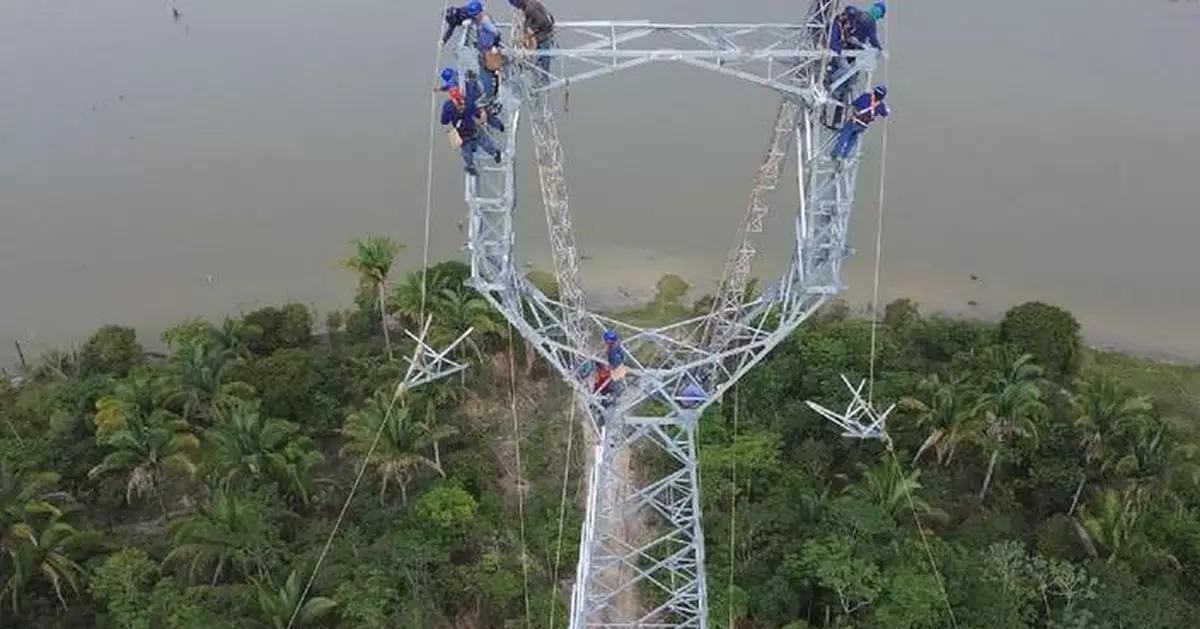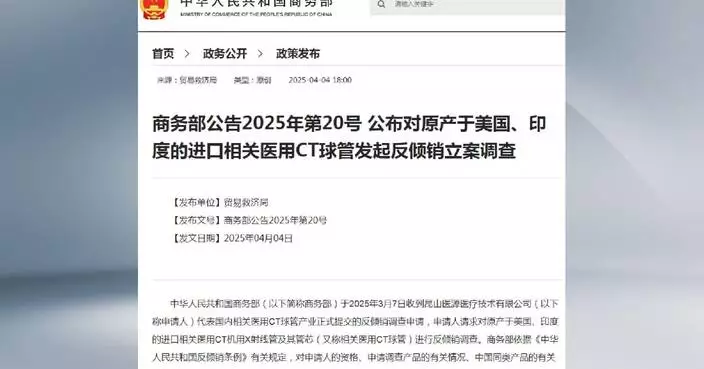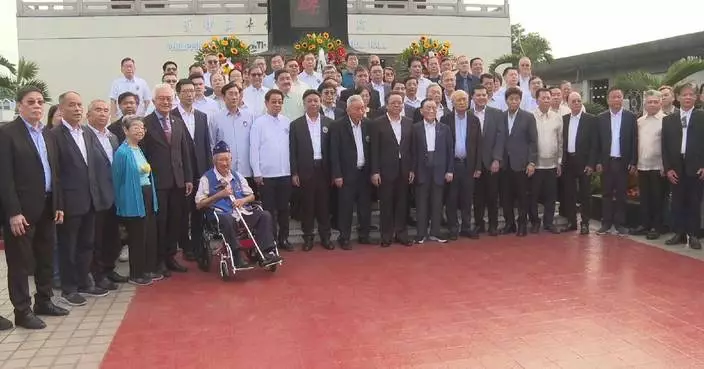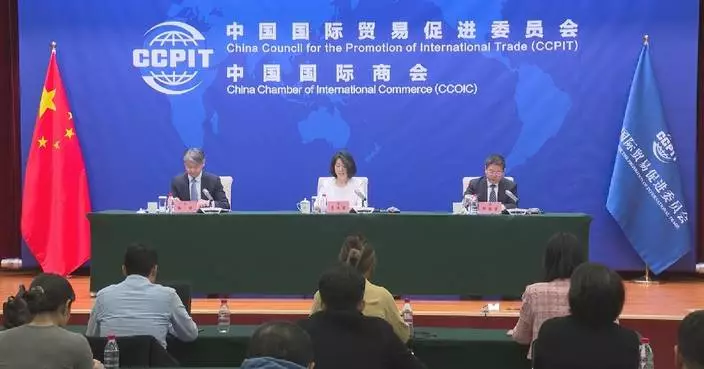A groundbreaking infrastructure project developed by Chinese state-owned engineering and construction company PowerChina is expected to ensure the power supply to Brazil's Amazon region, highlighting economic ties between China and Brazil in the energy sector.
Power supplies in the region can often be disrupted by unpredictable weather, a challenging environment, and long transmission distances.
The EDP power transmission and transformation project, undertaken by Chinese company SEPCO1, a subsidiary of PowerChina, aims to overcome these difficulties.
"This transmission line will bring comfort and dignity. It will give people the opportunity to own a freezer, access the internet, and meet other needs that depend on electricity. It will benefit everyone here," said Ildivany De Brito Basto, a resident.
In addition to ensuring energy supplies, the project will also help advance local economic growth.
"The transmission line passing through our city is really important. It's brought a lot of benefits, like creating jobs and boosting the local economy, especially in areas like hotels, food services and construction," said Rodrigo Coelho De Sousa, another resident.
Since the Amazon region is one of the most biodiverse places on Earth, the infrastructure project is prioritizing environmental protection, according to the management team behind the development.
"The Amazon region is one of the most biodiverse places in the world. It's home to many rare and endangered species, so protecting the environment here is absolutely crucial. During the planning and construction, we made sure to respect indigenous land rights and strictly follow local laws. Our team focused on things like managing the routes of transmission lines, controlling deforestation, cleaning up oil spills, and preventing soil erosion. This is all to protect the environment and support sustainable development," said Qi Bo, program manager of Brazil EDP Power Transmission and Transformation Project.
The construction of the project started in July 2021, and it is expected to be electrified soon as it's coming to the final adjustment phase.
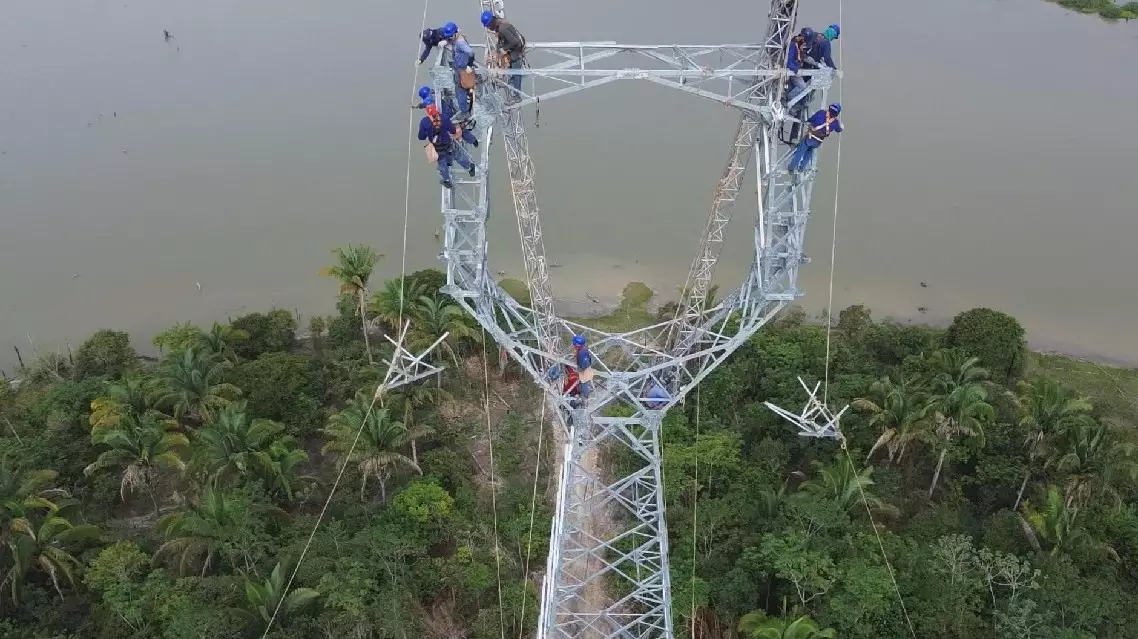
China-developed power project secures reliable energy in the Amazon
As the Qingming Festival approaches this Friday, various traditional folk activities have been held across China, celebrating the rich cultural heritage of the occasion.
With a 2,500-year history, Qingming Festival, or the Festival of Pure Brightness, observed in early April, uniquely combines ancestral worship with the celebration of spring. Falling on the 15th day after the spring equinox, this ritual-rich observance reflects China's enduring values of ancestral veneration and inspires deep introspection about what gives life meaning.
In Sijia Village, Huayin City, northwest China’s Shaanxi Province, a unique swing festival is held to mark the occasion. Eighteen different types of traditional swings, such as the spinning wheel swing, the Bagua swing reminiscent of a rotating carousel, and the balance swing designed for two people, have attracted many visitors.
Historically, Sijia Village served as a military post guarding the strategic Tongguan pass, a former mountain pass and fortress located south of the confluence of the Wei and Yellow Rivers. The swing tradition in the village has its origins in military training exercises like climbing and river crossing. The local swing culture further developed as regional trade flourished, eventually evolving into the "swing festival" that continues today.
"It's very exciting and tests your skill, endurance, and most importantly, your arm strength. You need to maintain balance," said Qu Xiangyang, a visitor.
In Rudong County, Nantong City, east China's Jiangsu Province, another traditional Qingming activity takes place - kite flying.
Flying kites as a way of making wishes is an age-old Qingming custom in this region. As a result, the Qingming Festival in Nantong is also known as the "Kite Festival."
The local Banyao whistling kite making skills is listed as one of the first national intangible cultural heritage items.
According to a folk culture expert, people traditionally write the names of diseases or misfortunes on paper, attach it to a kite, and release it into the sky. This practice is believed to drive away illness and disaster, while also serving as a way to make wishes.
In south China's Guangdong Province, a large tug-of-war competition is underway in Maoming City. Teams from different towns and streets are competing, attracting many locals to cheer on their teams.
Tug-of-war, which originated during the late Spring and Autumn period (770 BC - 476 BC), became part of Qingming customs during the Tang Dynasty (618-907). Emperor Xuanzong of the Tang Dynasty once organized large-scale tug-of-war competitions for the festival.
"Tug-of-war became very popular in the Tang Dynasty, even emerging as the national sport. It originated in the Jingchu region and later spread across the country. In ancient Lingnan (Southern China), tug-of-war games were a common tradition. Through these events, people seek to pray for peace, prosperity, and abundant harvests," said Yao Guojun, vice dean of the College of Arts and Law, Guangdong University of Petrochemical Technology.
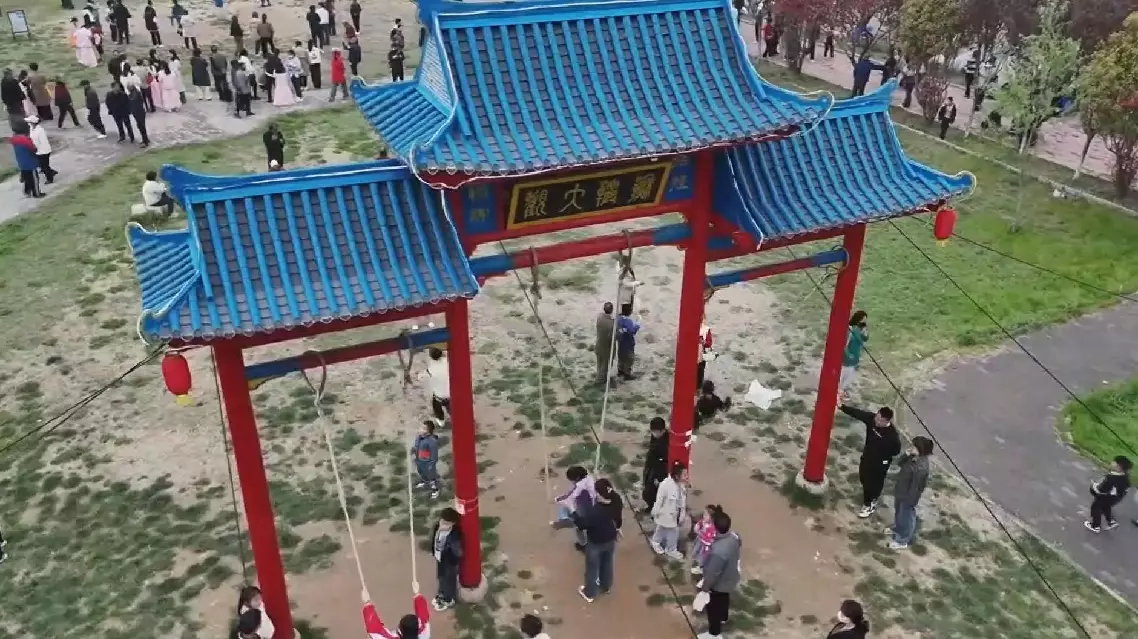
Traditional folk activities held for Qingming Festival



